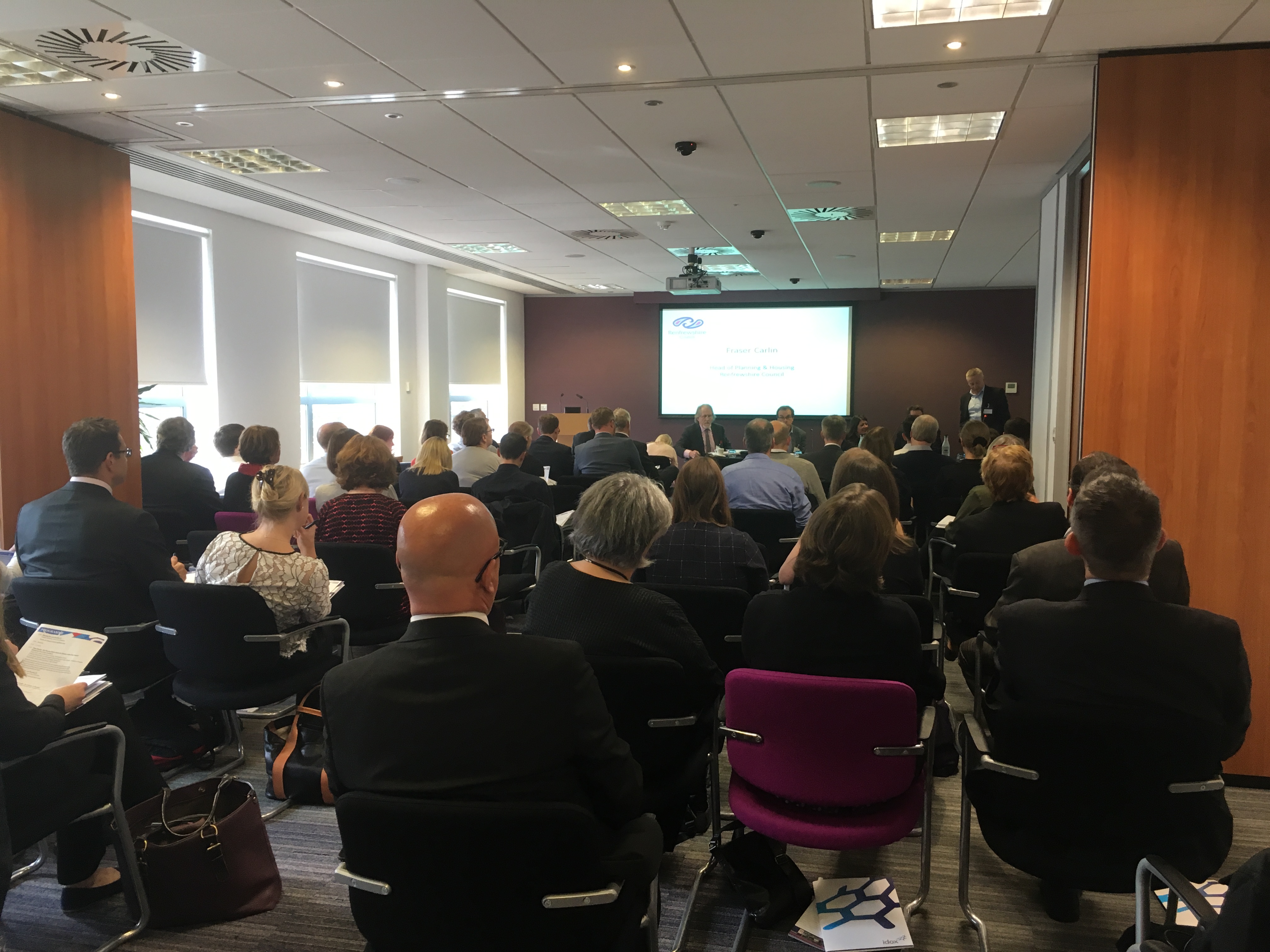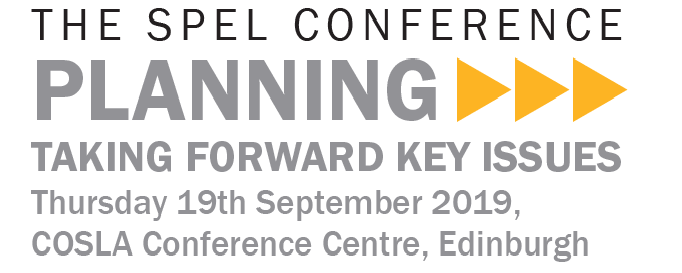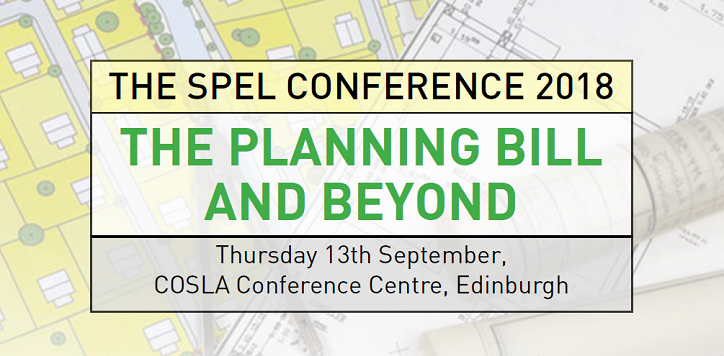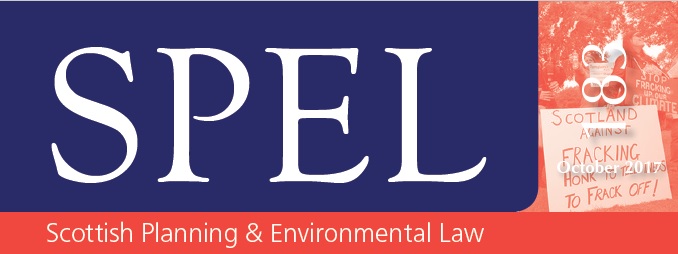
This year’s Scottish Planning and Environmental Law conference, held in Edinburgh’s COSLA building, focused on Anticipating and preparing for change and covered a range of topics from the impact of Brexit on planning and environmental law in Scotland to how planning and planners can help tackle the growing housing crisis. Delegates were given the opportunity to reflect on the challenges for planning and environmental law in Scotland as well as the great opportunities the next few years may present to the profession.
Bringing the planning profession together
The conference provided an opportunity for professionals from across the planning and law professions to come together to discuss some of the key challenges to their profession going forward. While Brexit was high on the list of discussion topics, the possibilities for reform, and the opportunities for practitioners to learn and share their experiences and knowledge with one another, for what is now the 26th year of SPEL, continued to be at the heart of the conference discussions.
Is planning fit for purpose?
Chaired by Stuart Gale QC, from event sponsors Terra Firma Chambers, the conference was opened by Greg Lloyd who addressed the issue of the “distinctiveness” of the Scottish planning system, asking the question, “Is planning fit for purpose?” In the context of Brexit and with the benefit of years of planning knowledge, Greg discussed the performance of planning and how its modernisation is equipping planners to deal with challenges in the future.

The Rt. Hon Brian Wilson, former UK energy minister, spoke next on the challenges energy targets are posing not only for environmental lawyers and practitioners but also for planners. He discussed how the drive to achieve energy targets both in renewable and traditional energy generation needs to be tackled as much by planners as environmentalists and politicians. He also highlighted the need to meet the growing demand for energy by helping to reduce energy use and tackle wider socioeconomic issues relating to energy in Scotland.
Brexit – the impact on planning
The morning session was brought to a close firstly by Laura Tainsh from Davidson Chalmers who spoke about the intricacies, expectations, challenges and potential opportunities for environmental law and practitioners in Scotland following the UK’s decision to leave the EU. She highlighted the importance of ensuring that the essential elements of environmental law are retained within any future UK or Scottish legislation and that a system is created which provides an opportunity for robust scrutiny and maintenance of standards, specifically in relation to the consistency of application. She also discussed some of the ways in which existing principles and policies can be future proofed. Following on from Laura, Robert Sutherland gave an overview of recent developments in community right to buy in Scotland.

The morning session also included a case law roundup which reviewed and discussed recent significant cases including: RSPB vs Scottish Ministers (2017); Douglas vs Perth and Kinross Council (2017); and Wildland ltd vs Scottish Ministers (2017).
Delivering new housing
The afternoon opened with a panel session, where speakers tackled the million-dollar question of whether planning reform will assist in the delivery of new homes to help tackle the growing housing crisis. Speakers from Renfrewshire council, the University of Glasgow, house builder Taylor Wimpey, and Rettie & Co. discussed a range of topics from barriers to the delivery of homes and infrastructure, to the setting of national housebuilding targets, as well as the challenge of building the right sort of housing, in the right place at the right cost, and the role of local authorities in meeting housing need.
The afternoon session included a second case law roundup which saw review and discussion of recent significant cases including: Taylor Wimpey vs Scottish Ministers (2016); Angus Estates (Carnoustie) LLP vs Angus Kinross Council (2017); and Hopkins Homes Ltd. vs Scottish Ministers (2017).
The role of planning in driving inclusive growth
The conference was closed by self-professed “economic agitator” Ross Martin, who discussed the role of planning more widely within Scotland’s economy and its role as an agent for driving inclusive growth. He stressed the need for planners and other related professionals to look at the “bigger picture” when it comes to planning, using the system as the engine for growth and development, rather than as a barrier, and challenged those in the room to think creatively about how planning can play a role in strategic, but inclusive growth in Scotland going forward.

Some of the key points of discussion to come out of the conference were:
- Planners, and planning lawyers need to recognise the importance of the wider social and economic context on their decision making, even if that decision only relates to one single building
- Brexit is providing a lot of uncertainty and raising a lot of questions about the future of planning and environmental law in Scotland and the UK as a whole, but it may provide an opportunity for practitioners to take the lead and shape the system in a way that better suits current needs
- There is scope and appetite, following the UK’s decision to leave the EU, to create a specialist planning and environmental law court to help scrutinise decisions and fill the void left by the EU in terms of accountability and implementation of environmental law, practice and strategy going forward
SPEL Journal is a bi- monthly journal published by the Idox Information Service. The journal is unique in covering all aspects of planning and environmental law in Scotland. Each issue contains articles on new legislation, significant court cases, expert comment on key planning appeals, government circulars and guidance, ombudsman cases and book reviews. SPEL deals with matters of practical concern to practitioners both in the public and private sector. Please contact Christine Eccleson at christine.eccleson@idoxgroup.com if you are interested in learning more about the journal or our subscription rates.
Follow us on Twitter to see what developments are interesting our research team.
If you enjoyed this blog, you may also be interested in our other articles:




 SPEL Journal (Scottish Planning & Environmental Law) has celebrated an impressive milestone this month, with the publication of its 200th issue.
SPEL Journal (Scottish Planning & Environmental Law) has celebrated an impressive milestone this month, with the publication of its 200th issue.


 As the recent Scottish Planning and Environmental Law conference showed, there are a number of external pressures affecting the planning system at the moment. These include the uncertainty around Brexit, the drive to achieve energy targets, and demographic changes impacting on housing supply and demand. Understanding how economic and social factors affect policy and decision-making is important, especially as we await the Planning Bill from the Scottish Government.
As the recent Scottish Planning and Environmental Law conference showed, there are a number of external pressures affecting the planning system at the moment. These include the uncertainty around Brexit, the drive to achieve energy targets, and demographic changes impacting on housing supply and demand. Understanding how economic and social factors affect policy and decision-making is important, especially as we await the Planning Bill from the Scottish Government.



You must be logged in to post a comment.